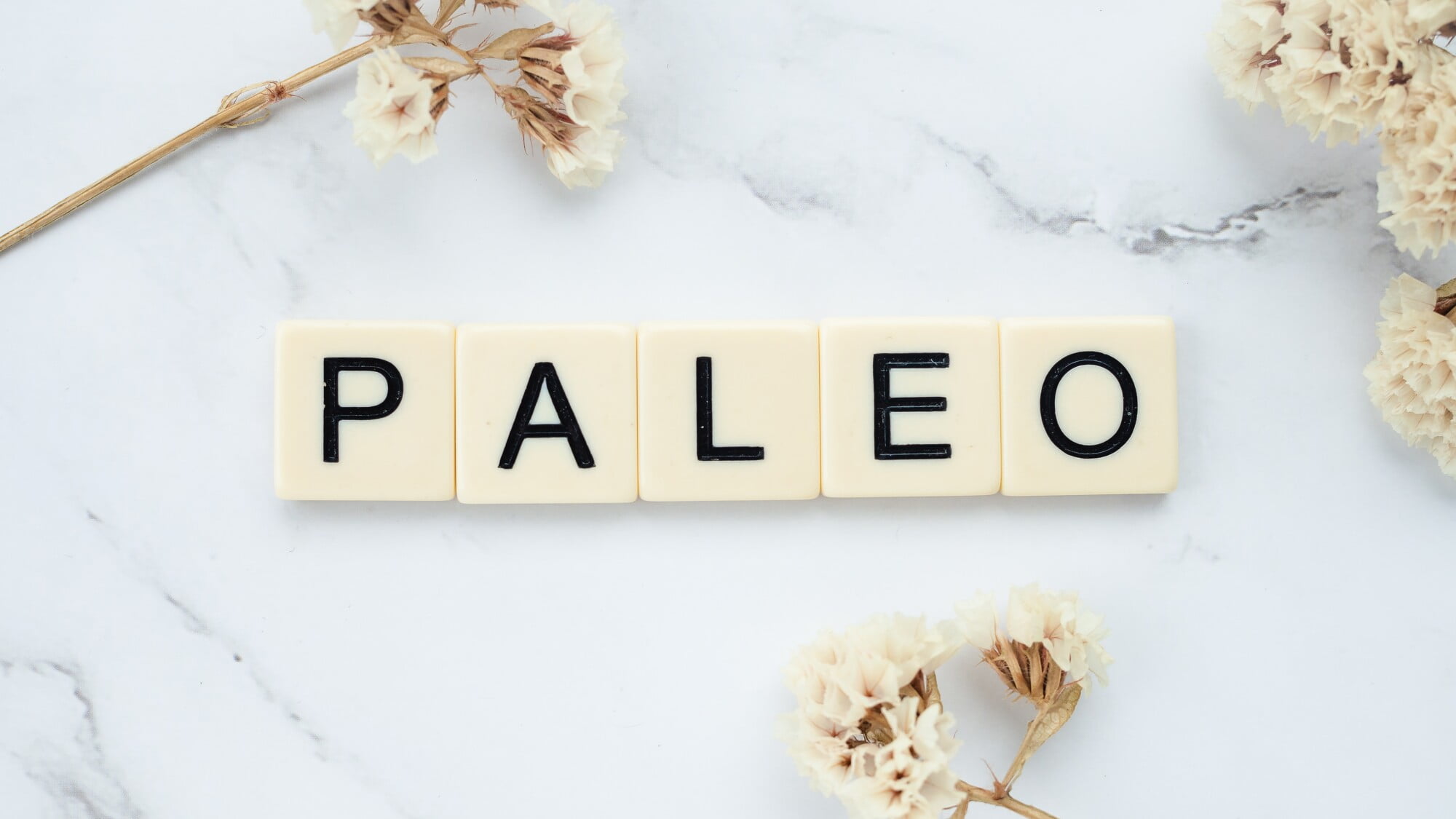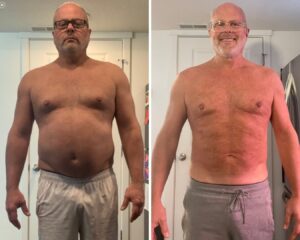Have you been looking in the mirror and feeling endlessly frustrated with how you look and feel? Is “eating less” just not working out for you anymore?
The paleo diet plan can help you achieve your fitness goals while allowing you to eat boat loads of some of your favorite foods. No more growling stomach ruining the family gathering for you!
A Paleo diet plan is all about eating natural, unprocessed foods. The Paleolithic era was over 2.5 million years ago, so quite a bit has changed. The cavemen didn’t exactly have bags of Cheetos at their disposal.
But that does not diminish the fundamental truth behind the Paleo diet plan, which is to stay away from all the unhealthy products that entered our modern-day food chain.
Whether you are looking to lose weight, look sexier, improve your energy levels, or simply improve your health, the Paleo diet can be the answer. This article will discuss what Paleo is, what the plan looks like, what to eat, and what not to eat.
What Is the Paleo Diet?
The paleo diet is all about adhering to our ancestral diet from the paleolithic era. This was the time of hunter-gatherers who ate the food that they harvested exactly as they found it. Much of their diet was raw, and it was definitely unprocessed, unlike our modern diets.
Not only were our paleolithic ancestors more active than our typical modern, sedentary lifestyle, but they ate less sugar, carbohydrates, and fats than our modern diets included. While you sit at a desk all day in and in front of a TV all night, they were running around chasing down their next meal. They were able to fuel their bodies to function to their ultimate capacity with a diet that’s high in protein and slow-acting carbohydrates.
The main goal of the paleo diet is to cut out modern, processed foods. There are also certain foods that are part of a modern diet that were not available to the hunter-gatherers such as dairy products, alcohol, and legumes. You wouldn’t see a paleolithic man with a beer gut.
Our bodies are not very well equipped to digest those foods, so cutting them out might actually make you feel like less of a slob.
What Are the Benefits of the Paleo Diet?
Most of the people who engage in the paleo diet do so to lose weight. There’s certainly plenty of evidence that paleo diets help you lose weight.
Part of that is due to the fact that people on a paleo diet automatically take in fewer calories per day than someone not following a diet. But that isn’t where the health benefits end.
Diabetes Risk Reduction
The paleo diet can help reduce your risk of developing diabetes. Type two diabetes is often caused by eating an excessive amount of sugar in your life as your body begins to develop insulin resistance. Even if you already have diabetes, a paleo diet can help regulate your blood sugar levels and improve your symptoms.
Lower Blood Pressure
One of the biggest goals of a paleo diet is to eat fewer fats and engage only in healthy fats. Our modern diet includes a lot of saturated and trans fats which can clog up arteries over time. Just check the nutritional facts on that pack of cookies next time. The paleo diet all but eliminates those kinds of fats.
Just three weeks on the paleo diet can improve your blood pressure levels.
More Energy
Any good weight loss plan includes both diet and exercise. But how can you put your all into your exercise regimen if you don’t have the energy to do it?
The paleo diet fills you up with protein which is necessary for repairing and building muscle. It also focuses on slow-acting carbohydrates which will keep you full and energized throughout your workout. Eating a paleo diet won’t just make you lose weight, it will actually enhance your experience in the gym and level up your gains!
Plus, your body won’t expend energy on hard-to-digest foods such as dairy and alcohol. You’ll feel much more full of life, energized, and not worn out on a paleo diet.
What Can You Eat on Paleo?
You may already be wondering “what do you eat on the paleo diet?” Rabbit food?
It’s less restrictive than you might think! The Paleo diet is all about eating whole, unprocessed food. When you avoid processed foods, you may even start saving money on your shopping list during your weight loss journey.
Paleo eating includes:
- Fresh fruit such as berries, apples, bananas, kiwis, and any of your other favorites
- Fresh vegetables of non-starchy varieties like kale, spinach, sweet potatoes, carrots, brussel sprouts, broccoli, etc.
- Fish – including fish with lots of healthy fats like salmon
- Shellfish like prawns, lobster, crab, and oysters
- Grass-fed and game-fed meat and fish such as beef, chicken, pheasant, lamb, and goose (trimmed of fat and unprocessed)
- Free-range eggs (in moderation)
- Unprocessed nuts like cashews, almonds, and walnuts
- All seeds including chia, sunflower, and pumpkin seeds
- Healthy oils such as avocado oil, olive oil, coconut oil, and flaxseed oil
- Honey (for sweetener)
Basically, if you’re buying food in its original form – completely unprocessed or changed – you’re eating paleo! It’s easy to be paleo-friendly, and your plate won’t even look like a diet most of the time.
What Foods Can You Not Eat on the Paleo Diet?
What foods are off-limits in the paleo diet meal plan? What is not paleo diet food?
We’ve already said processed foods, but that can be tricky. We all know bagged snacks from a vending machine are processed. But what are the other processed foods that aren’t necessarily on your radar to avoid?
- Any bagged snacks such as chips or sweets
- Refined vegetable oils
- Dairy products like milk, cheese, cream cheese, butter, and yogurt
- Meats with excess fat or processing including bacon, ribs, and pork chops
- Processed grains and cereal which includes bread, breakfast cereal, and pasta (paleo is gluten-free)
- Legumes (especially canned legumes) like beans, peanuts, and chickpeas
- Refined sugars like chocolate, candy, fruit juice, and soda
- Starchy vegetables including potatoes and tapioca
- Salted foods like beef jerky, salty condiments, salad dressings, and pickles
- Alcoholic beverages
How to Structure Your Paleo Diet Plan
You don’t have to go all-in on paleo right away. In fact, it’s better to slowly remove items and teach yourself to enjoy and understand your new diet.
For your first few weeks, allow yourself three cheat meals a week. During these meals, you can break the diet regimen and eat whatever you like. That includes sweets, alcohol, grains, etc.
The good news is that after just a couple of weeks like this, you may not like the feeling you have after those cheat meals anyway.
During the next stage, reduce your cheat meals to two per week. At this point, your body will be used to the paleo diet, and you probably won’t want more than two a week anyway. Unless you want to feel like total garbage.
The final stage is for ultimate weight loss results. In this stage, you either have no or just one cheat meal per week.
That’s right! You can still eat one cheat meal a week and consider yourself paleo.
This is so necessary for the longevity of your paleo goals. No one wants to give up sweets forever, and this gives you just the right amount of wiggle room.
A Typical Paleo Diet Meal Plan
While the paleo diet is less restrictive than you may have previously thought, it can be hard to transition to strictly eating paleo meals. Simple paleo meal plans can help you transition to a healthy diet until you’re ready to come up with your own paleo recipe list. Here’s a paleo meal plan for a week to get you started:
Monday:
- Breakfast: Oat free porridge (or chia pudding) with strawberries and honey
- Lunch: Hearty salad with grilled chicken
- Snack: Mixed nuts and oven-dried fruit
- Dinner: Fish and green beans in a tray bake
Tuesday:
- Breakfast: Poached egg on a bed of spinach or kale
- Lunch: Butternut squash soup topped with pumpkin seeds
- Snack: Mixed berries
- Dinner: Bunless fat-free burger with baked sweet potato
Wednesday:
- Breakfast: Almond milk smoothie with kale, banana, and apple
- Lunch: Beef stir-fry with bell peppers
- Snack: Hard-boiled eggs and capers
- Dinner: Steak tartare with a fresh salad
Thursday:
- Breakfast: Turkey bacon with eggs and tomato
- Lunch: Smoked salmon and salad
- Snack: Frozen grapes and blueberries (tastes like candy!)
- Dinner: Lobster with a cabbage salad
Friday:
- Breakfast: Fruit with chia seeds and almond milk
- Lunch: Omelette with tomato, zucchini, and mushroom
- Snack: Cucumber and carrot sticks
- Dinner: Chicken stew with mixed vegetables in a vegetable stock
Saturday:
- Breakfast: Cinnamon chia pudding
- Lunch: A chicken sandwich with a homemade dressing on a lettuce bun
- Snack: Frozen banana
- Dinner: Lamb with roasted vegetables
Sunday:
- Breakfast: Almond flour pancakes and blueberries
- Lunch: Broccoli and nut-based salad
- Snack: Apple slices and homemade almond butter
- Dinner: Garlic chicken bake
Can Anyone Go Paleo?
While theoretically anyone can go paleo, it may not be a sustainable option for certain people. It’s a restrictive diet which means you have limited options for food. If you find that you’re at a deficit in certain vitamins and minerals, you may have to take supplements or adjust your diet plan to include more of the things your body needs.
For this reason, people with a lot of food allergies or vegetarians may find that there are other diets that better fit their nutritional needs. Talk to a nutritionist to find the best method for you.
Paleo Diet Plan for Sustainable Change
The paleo diet plan is perfect for anyone who wants to make a change to their lifestyle that will last and carry them through their fitness journey. Paleo encourages you to eat as much as you need while restricting yourself to the healthiest foods possible.
Are you ready to start transforming your body through diet and exercise? Sign up for our daily texts to get your butt off the couch today!






0 Comments